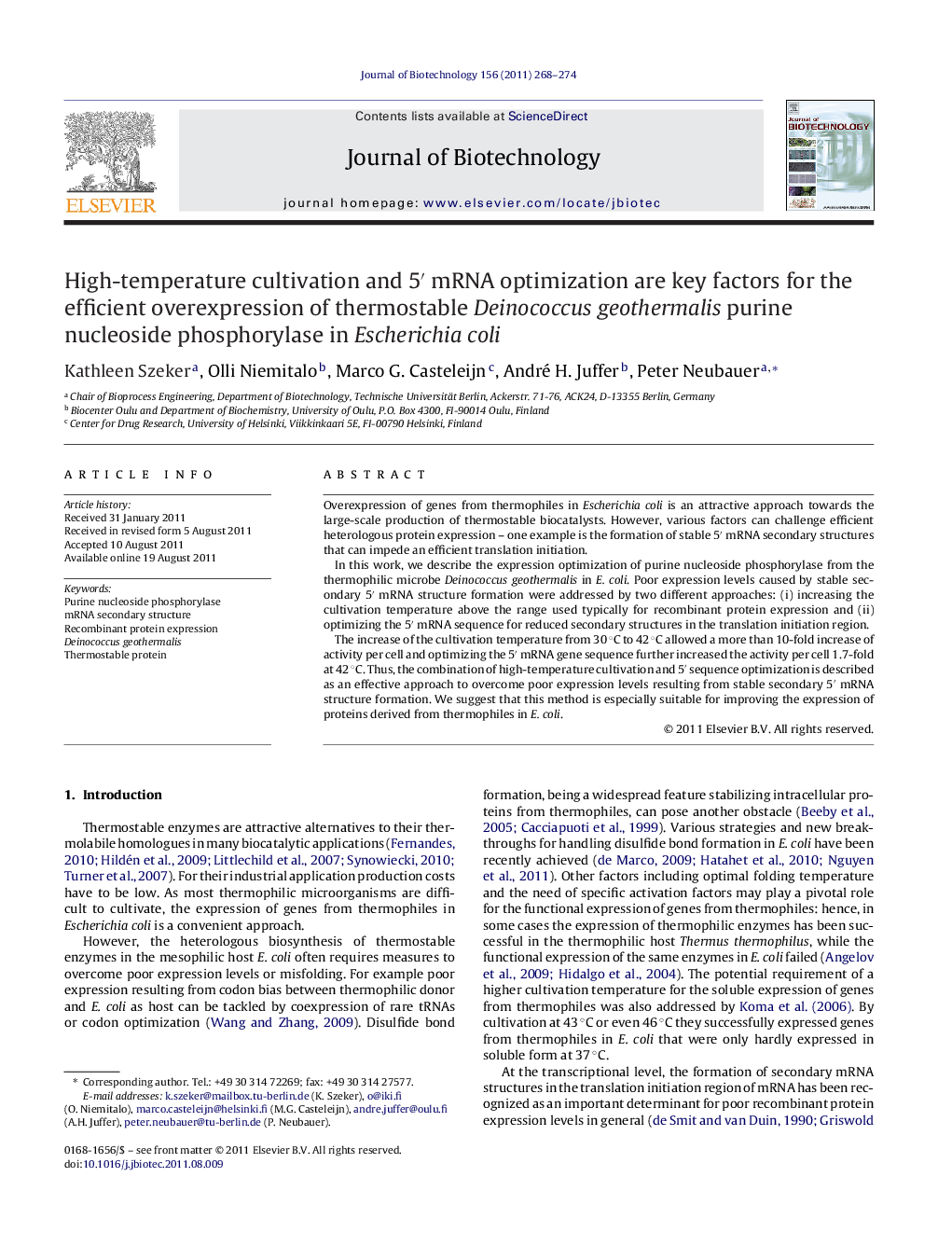| کد مقاله | کد نشریه | سال انتشار | مقاله انگلیسی | نسخه تمام متن |
|---|---|---|---|---|
| 23806 | 43474 | 2011 | 7 صفحه PDF | دانلود رایگان |

Overexpression of genes from thermophiles in Escherichia coli is an attractive approach towards the large-scale production of thermostable biocatalysts. However, various factors can challenge efficient heterologous protein expression – one example is the formation of stable 5′ mRNA secondary structures that can impede an efficient translation initiation.In this work, we describe the expression optimization of purine nucleoside phosphorylase from the thermophilic microbe Deinococcus geothermalis in E. coli. Poor expression levels caused by stable secondary 5′ mRNA structure formation were addressed by two different approaches: (i) increasing the cultivation temperature above the range used typically for recombinant protein expression and (ii) optimizing the 5′ mRNA sequence for reduced secondary structures in the translation initiation region.The increase of the cultivation temperature from 30 °C to 42 °C allowed a more than 10-fold increase of activity per cell and optimizing the 5′ mRNA gene sequence further increased the activity per cell 1.7-fold at 42 °C. Thus, the combination of high-temperature cultivation and 5′ sequence optimization is described as an effective approach to overcome poor expression levels resulting from stable secondary 5′ mRNA structure formation. We suggest that this method is especially suitable for improving the expression of proteins derived from thermophiles in E. coli.
► 5′ mRNA sequences may impede expression of thermophilic enzymes in mesophiles.
► Optimization of secondary structures in the translation initiation region may help.
► Increase of the cultivation temperature from 30 °C to 42 °C resulted in a 10-fold increase of activity.
► Optimizing the 5′ mRNA gene sequence further increased the activity 1.7-fold at 42 °C.
► Combination of high-temperature cultivation and 5′ sequence optimization was effective to overcome poor expression.
Journal: Journal of Biotechnology - Volume 156, Issue 4, 20 December 2011, Pages 268–274